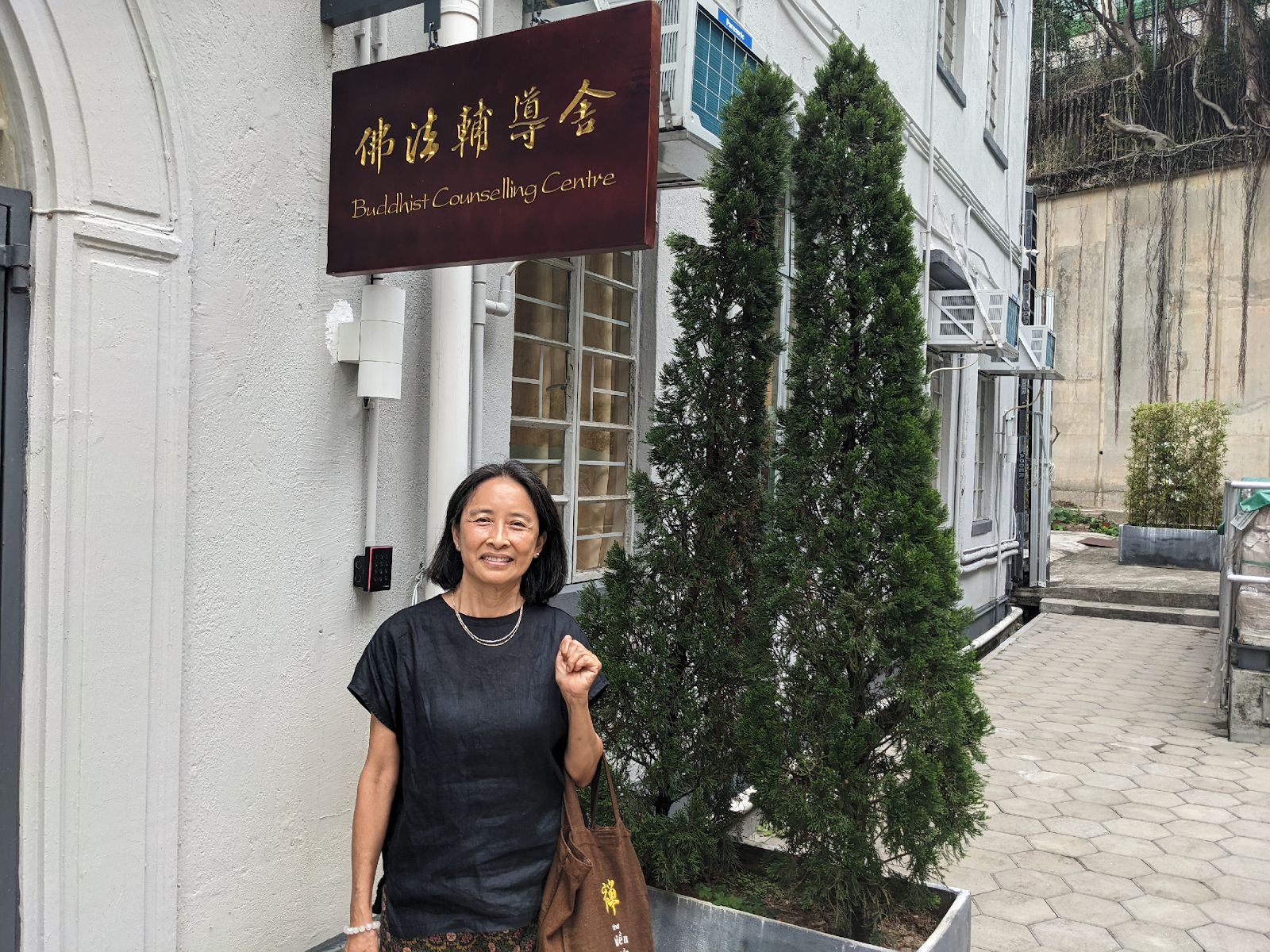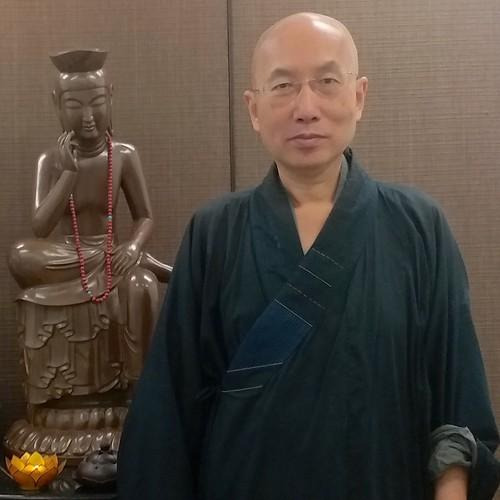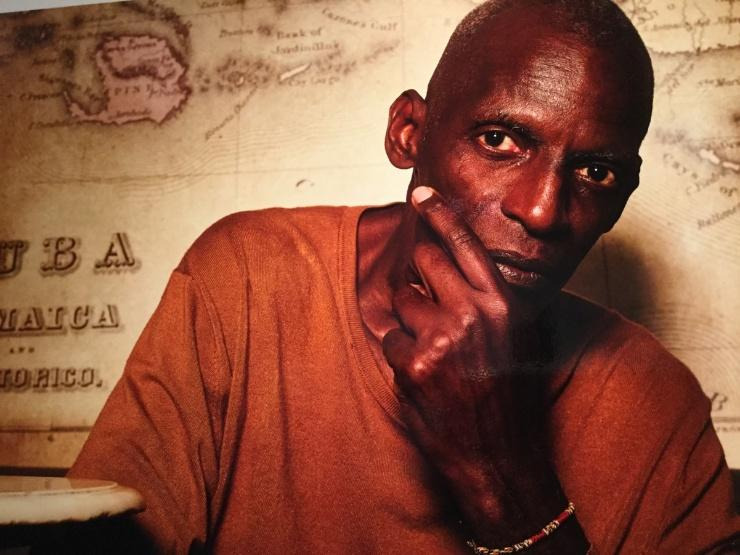
El Two Arrows Sutra (Sutta Sallatha) narrates that the Buddha explained that, when a person does not discern any other way to alleviate the painful sensation other than seeking pleasure, he becomes obsessed and distressed, “it's as if an arrow were shot at him and then another...”. Well, Buddhist Counseling (CB) is a service that helps to deal realistically with this situation
In Latin America, environments that appeal to Buddhist teachings have proliferated, especially in the field of mental rehabilitation. However, the figure of a lay and professional Buddhist counselor does not exist as such. When talking about these services, we almost always refer to the religious work of Buddhist monks and nuns in their institutions.
What sets this professional apart from others who rely on Buddhist teachings in their mental health care work? Who better than a professional expert in this field could explain and illustrate us in detail?
Mayling Chan, a specialist in this field, kindly shares with the audience of Buddhistdoor in Spanish (BDE) your postgraduate experience, your training and your professional performance from this perspective.
Mayling Chan has a degree in Philosophy and Literature from the University of Warwick and a master's degree in Agricultural Development and Environmental Management from the University of London. She has worked as a manager and director at the NGOs Oxfam Hong Kong and Friends of the Earth Hong Kong, dealing with issues related to development, the environment and human rights. She is also a graduate of a master's degree in Buddhist Counseling, taught by the Center for Buddhist Studies at the University of Hong Kong, and currently provides this professional service at the Center for Conscious Spiritual Growth Ltd. (Awareness Spiritual Growth Centre Ltd., ASGC) in Hong Kong.
BDE: What can you share with us about the journey you have taken to work as a professional Buddhist counselor?
May Ling Chan: First, I graduated from the Master in Buddhist Counseling (MBC), an academic program taught by the Center of Buddhist Studies (CBS) at the University of Hong Kong (HKU).
Later, I completed the Postgraduate Diploma in Professional Practice of Buddhist Counseling, an 800-hour program developed over 18 months, made possible by a collaboration between CBS and HKU SPACE (acronym in English for “School of Professional and Continuing Education of the University of Hong Kong”). The practical classes, counseling service and activities were held at the HKUCBS Buddhist Counseling Center (“Buddhist Counseling Center of HKUCBS”), located in the Tung Lin Kok Yuen Want Fat Ching She temple (TLKY-WFCS).
The certificate granted officially accredits graduates to practice as Buddhist counseling professionals. In addition, it includes registration with the Hong Kong Buddhist Association.
In particular, we work at the Center for Conscious Spiritual Growth Ltd. (“Awareness Spiritual Growth Centre Ltd.”, ASGC), providing support in areas such as Buddhist chaplaincy, mental health care and spiritual accompaniment in hospitals, schools and prisons. We also give courses and talks at educational institutions and other public spaces.

BDE: What makes CB different from other forms of psychotherapeutic intervention that appeal to Buddhist teachings?
MCH: There is no doubt that Buddhism has been arousing interest both in India and in the Far East and beyond. We see that psychologists, psychoanalysts, transhumanists, and even neurologists recognize the value of applying Buddhist teachings to mental health rehabilitation. Mindfulness-Based Therapy (Mindfulness-Based Therapy) has been very popular.
However, Buddhist Counseling (CB) goes much further by applying Buddhist contemplative teachings and practices to psychotherapeutic intervention. Hence, the directive approach, the analytical framework or the backbone of CB is known as Dharma Therapy (Hin, 2024).
BDE: Isn't the fact that Buddhism is applied in secular settings a paradox?
MCH: Good! Let us not lose sight of the fact that, given the ecumenical vocation of Buddhism and circumstances such as decolonization and globalization, Buddhism is part of the modern and contemporary cultural fabric, both religious and secular.
On the other hand, in addition to the debate about whether Buddhism is religion, philosophy or culture, what is relevant to CB is that Dharma offers contemplative practices to alleviate psychological and spiritual suffering.
BDE: Do the specialist and the client necessarily have to be Buddhists?
MCH: Dharma Therapy works both in the monastic and in the secular environment. Religious affiliation is neither an indispensable condition nor an obstacle.
A Buddhist counselor acts as a compassionate teacher and friend, guiding his client to gain awareness and activate his own spiritual resources and potential, helping him to realize the root and the solution of his suffering. Finally, we accompany him in his motivation, his responsibility and his decision to heal and transform himself.
Neither dogmas nor rituals nor the rules of Buddhist discipline are used, even when this service is offered in a monastery or convent. However, if the client has been carrying out these Buddhist or other religious practices, we are in no way opposed to this. We understand that this is part of the client's resources for rehabilitation.
Moreover, at CBS-HKU, where I did my master's degree in CB, studies are being carried out with neuroimaging technologies that record the effects on the brain and neurons of recitations, such as the name of Amitaba Buddha or even Santa Claus.
BDE: Could you tell us a little bit about how you do the work?
MCH: The patient completes a form with their personal data. Afterwards, a telephone interview takes place in which the client expresses their situation and expectations. If accepted, you are asked for your informed consent.
The customer completes an additional form about their personality and emotional state. Afterwards, a telephone interview is conducted. Finally, sign the informed consent document, which includes a wellness scale (wellness test). Depending on the client's progress, we could agree to finish in less than 12 sessions.
From the beginning and throughout the entire process, we promote what is known as a “spiritual oasis”: conditions for you to feel calm at all times during the intervention. For example, the work space at the ASGC was designed to create an environment of tranquility. In addition, we advise clients to implement this “spiritual oasis” in their daily lives, creating spaces of calm and serenity.

I want to reiterate that we strive to ensure that clients find the causes of their problems, as well as the necessary conditions and appropriate prospects for their rehabilitation, not only psychological, but also spiritual. For these purposes, we are guided by the “Seven Steps contemplated in psychotherapeutic interventions based on Dharma Therapy” (Hin, 2024):
- Introduce and prepare the customer.
- To become aware of the suffering and the unsatisfactory conditions of the current situation.
- Develop a desire to be free from suffering.
- Question and Investigate the Cause of Suffering
- Observe and learn by paying attention to suffering and its cause.
- Develop understanding and wisdom about how to end suffering and its cause.
- Take the necessary steps to end suffering.
Of course, we apply these guidelines not mechanically, but based on the evaluation of the client's situation and what they require for their rehabilitation.
BDE: Can you give us any testimony that specifically illustrates this type of intervention, its effectiveness and challenges?
MCH: In the case of a 40-year-old client that I recently served, she shared during a telephone chat that she suffers from anxiety, stress and depression on a recurring basis. His expectation was to calm down, to feel at peace and to find the will to do what was necessary to achieve it.
From the beginning of the sessions, the client agreed to discuss the types of suffering in her life and to define what she had suffered in the present and in the past. On the one hand, he expressed his frustrated desire to be an ideal and increasingly professionally competent person; on the other, he mentioned the loss of financial solvency to meet his needs. At the same time, she felt ashamed and afraid of not being positively accepted by her family, her fellow students and her colleagues.
It became clear that anxiety, stress, and feelings of fear and anger settled in his mind for no identified reason.
We proposed an exercise to analyze the Five Aggregates of Attachment (Khandhas) to help her become aware of the mental root of her discomfort.
For example, the analysis of what is called the aggregate of the form (Rupa) allowed the client to realize more clearly that, in adverse but inevitable circumstances such as the current ones, she is affected by the same disturbing emotions.
The analysis of the aggregate of sensations (Vedana) made it easier for the client to become aware of unpleasant emotions or feelings, such as anxiety and stress, both in her body and in her mental expression. In this way, it was possible to better characterize those fears that repeatedly continued to torment her.
The analysis of the aggregate of perceptions (Sañña) made clear the shame he felt when presenting himself to his family, his fellow students and his colleagues. Their usual reaction was to isolate themselves and avoid such encounters. This was associated with the image, ideal or concept that she had been making of herself as a person who was incompetent to support her family and carry out her professional work. Hence, she perceived herself as a hopelessly frustrated and suffering person.
The Volitions (Sanhkaras) express, precisely, the reactions to these circumstances. For example, she tries to avoid talking to her son and, at the same time, desperately wants to be in control.
The analysis of consciousness (Viññana) allowed the client to realize the relationship between her suffering and the image she had built of herself.

In short, through the analysis of the aggregates, the client was able to recognize the conditionality, insubstantiality and transience of the situations, as well as the attachment to the thoughts, concepts and judgments about herself and others that disturb her.
After working in the areas of dissatisfaction, we did the exercise of fire (symptoms) and wood (cause) through the drawing of a bonfire, where the client shows that she has become more aware of her attachment to work - workaholic -, fear, lack of self-compassion, and that the root of her suffering depends on her mental reaction to circumstances.
In the Buddhist context, the cause of suffering is ignorance, attachment and hate.
BDE: Do you base your work on any particular Buddhist tradition?
MCH: Dharma Therapy (Hin, 2024; Cheung, 2023) is based on dependent origin (Pratityasamutpāda), an emblematic teaching of Buddhism. This doctrine explains the process of cyclical existence, supported by the twelve links, and the interdependence between mind-matter (Nama-rupa) and conscience (Viññana), which is very important for understanding the emergence of existence and suffering.
All Buddhist traditions adopt the approach to meditation known as mindfulness and provide useful techniques both for the preparation of the counselor and for the rehabilitation of the client.
As I said, the patient's particular situation guides our behavior. I can assure you that clients always find the practice of meditation in compassion very beneficial (Karuna).
BDE: How do customers find them?
MCH: Customers find out through social networks, communication media, chats and, of course, through recommendations from friends, family and other customers.
The population that consults us is global and includes parishioners, lay people and supporters of Buddhism, as well as people from schools, hospitals and associations, as well as from other environments dedicated to its dissemination and practice.

BDE: Does CB help with all types of mental illness? By the way, this has been under debate (Samantha, et. al, 2024).
MCH: The CB works with self-reflective clients who are willing to carry out the practices in a conscious way, with the objective of obtaining a favorable spiritual perspective to face their suffering. I don't know to what extent one could intervene in this way with clients whose cognitive level is confused and unstable, such as those suffering from schizophrenia, bipolar disorder or psychosis.
-------------
Mayling and the entire team of Buddhist counselors at the ASGC are doing unprecedented work, applying Buddhist teachings beyond the exclusive use of mindfulness in psychological intervention.
It is important to highlight that CB expresses the potentiality and versatility of Dharma, especially in contexts where the lay assimilation of Buddhism is significant.
This Buddhist perspective suggests that psychological disorders are an opportunity for people to face the challenge of spiritual transformation, that is, a change in the way they perceive themselves, others and circumstances.
References
Hin, H. S. editor (2024). “Buddhist Spiritual Counseling: An Exploratory Review of the Application of Dharma Therapy”. In: Yim, S.W.J (2024). Buddhist Spiritual Counseling. Disentangle the Suffering of Two Arrows. Tsz Shan Buddhist Spiritual Counseling Center, Hong Kong, pp.82-121.
Samantha, S. A. et al. (2024). “Qualitative Comparison of Secular and Buddhist Informed Mental Health Practitioners' Perceptions of Non-Attachment”. Mindfulness, 15:345 —358 https://doi.org/10.1007/s12671-023-02291-5
Cheung, K.L (2023). The Guide to Buddhist Counselling. Routledge, NY.

Eduardo Francisco Freyre Roach is a Cuban philosopher, graduated and PhD in Philosophy from Moscow State University (MGU). For 27 years at the Agrarian University of Havana (UNAH) he was professor of History of Philosophy, Ethics, Logic, and Philosophy of Education. He is a Master in Buddhist Studies (MBS) from the University of Hong Kong (HKU), presenting the dissertation on Buddhism and Wittgenstein. He taught postgraduate studies in Buddhism and Science at the Federal University of Santa Catarina (UFSC) and Buddhist Philosophy at the University of Havana (UH). He has published articles on the Buddhist perspective of friendship, sports, war, Buddhist yoga, ecology, and war.










